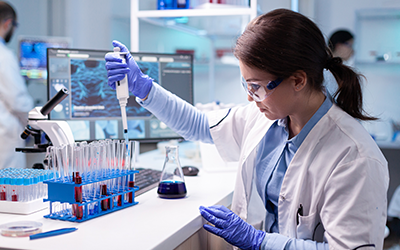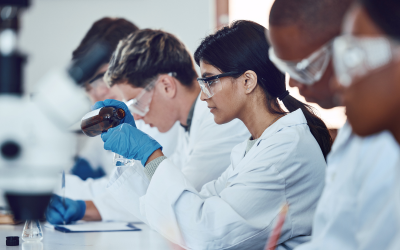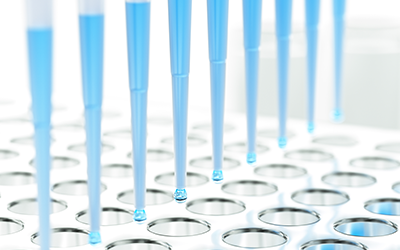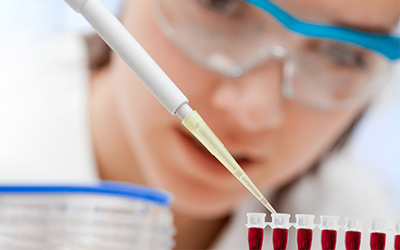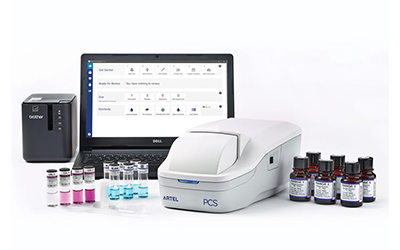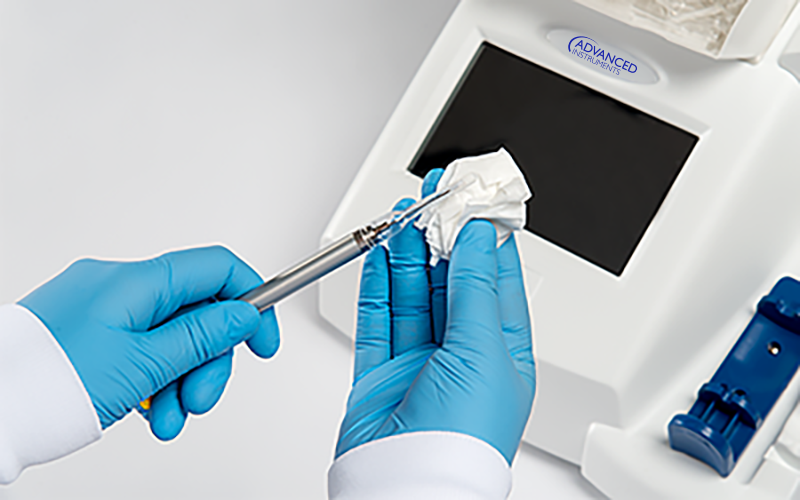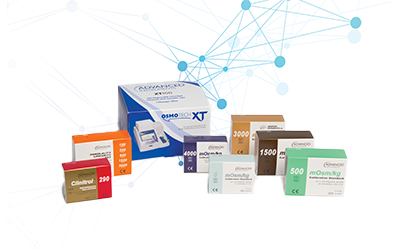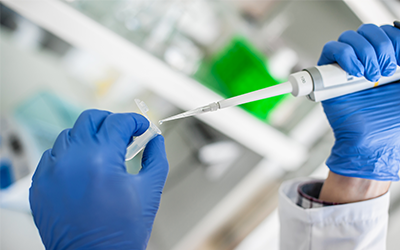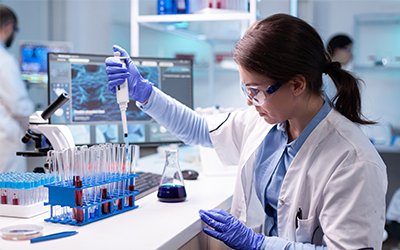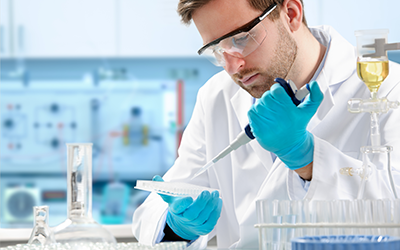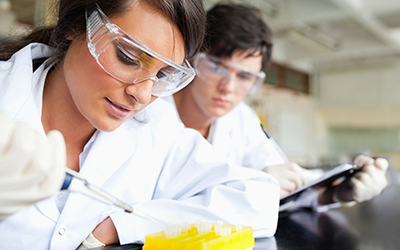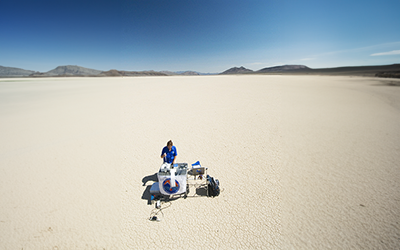A team of scientists journey to extreme locations to demonstrate how even the most typical laboratory conditions can wreak havoc on pipette accuracy.
While pipetting does not normally conjure images of sweltering temperatures, exploding geysers or mountainous heights, laboratory technicians do often work in or with extreme conditions. Pipetting hot and cold liquids, working in walk-in incubators and glove boxes, and outsourcing pipette calibration to laboratories at different elevations are common occurrences in today’s life science community. And all of these tasks can expose pipettes to harsh environments and put data at risk.
 Due to the mechanical function of air-displacement pipettes, environmental conditions are a major source of volume variation and, consequently, laboratory error. Given the small volumes used in today’s laboratories, a volume inaccuracy of just one microliter may significantly alter results. For data accuracy and precision, laboratories must account for the error caused by laboratory conditions.
Due to the mechanical function of air-displacement pipettes, environmental conditions are a major source of volume variation and, consequently, laboratory error. Given the small volumes used in today’s laboratories, a volume inaccuracy of just one microliter may significantly alter results. For data accuracy and precision, laboratories must account for the error caused by laboratory conditions.
Helping laboratories understand and quantify how environmental conditions affect pipetted volumes was the goal of the Artel Extreme Pipetting Expedition. This year-long scientific study took Artel scientists to extreme locations to test pipette performance in a variety of environments. The field results were compared to data collected at Artel’s controlled test laboratory and the resulting error calculated. This study can help pipette users understand how their instruments’ performance varies in differing laboratory conditions–so that they can eliminate this potential source of error and ensure the integrity of their data. (The expedition carried an Artel PCS® to each location. This system is essentially immune to environmental conditions, and measures pipette-dispensed volumes with a high degree of accuracy and precision.)
Mission 1 – Barometric Pressure (Mount Washington)
To study the effect of barometric pressure on pipetted volumes, the Artel Extreme Pipetting Expedition visited Mount Washington (6,288 feet), the highest peak in the White Mountains of New Hampshire. Although there are not many laboratories operating at over 6,000 feet, not all laboratories operate at zero elevation. Understanding how barometric pressure affects data is therefore essential.
At Mount Washington, Artel found that variable-volume air-displacement pipettes under-delivered by up to 33 percent compared to data collected in the controlled laboratory at sea-level. Error was greatest when pipetting smaller volumes and when using pipettes at the lower end of their volume range.
For example, data in Table 1 show that at the high altitude of Mount Washington, a 20-microliter pipette under-delivered by about one percent when set to deliver its maximum volume, and under-delivered by three percent when set to deliver its minimum volume. The two-microliter pipette under-delivered by four percent when set to its maximum volume but under-delivered by 32 percent when set to its minimum volume.
Although altitude is a constant condition within a laboratory, consider laboratories above sea level that send pipettes to a calibration service at sea-level. Even newly calibrated, the pipettes would likely under-deliver once back in the laboratory and produce inaccurate data. The Mount Washington data show the importance of regularly verifying pipettes in the environment in which they are used. Also consider organizations with laboratories in multiple locations. Pipettes must be calibrated to a known, traceable standard for data comparability.
How to Correct for Error Caused by Altitude
The volume variation found at Mount Washington is explained by the lower air density found at higher altitudes. Air-displacement pipettes contain air gaps between the piston and the liquid that is being pipetted, and these gaps act as a cushion. When an operator aspirates, presses her thumb down on the plunger at the top of the pipette, and inserts the pipette into the liquid, air is trapped in the pipette tip. This is called the captive air volume. When the plunger is released, the trapped air acts as a spring that connects the piston to the liquid and pulls the liquid up into the tip. If air is less dense, less liquid is pulled into the pipette tip and subsequently dispensed, resulting in under-delivery and data inaccuracy.
The magnitude of volume variation caused by altitude for each pipette is relatively constant, which facilitates correction within the laboratory. For example, the 10-microliter pipette under-delivered by 2.6 percent and 2.8 percent in replicate tests. To compensate for this repeatable volume variation, laboratories have two options. The first option is to adjust the internal mechanism of the pipette for the specific environmental conditions. The second option is to adjust the delivery setting. In this case, because the pipette under-delivered by an average of 2.7 percent, setting the pipette to deliver 10.27 microliters would deliver an actual volume of 10 microliters.
Mission 2 – Temperature Disequilibrium (Yellowstone National Park)
After collecting data to quantify the effect of barometric pressure on pipetted volumes, the Artel Extreme Pipetting Expedition set out for Yellowstone National Park to study error caused by thermal disequilibrium. Laboratory assays and protocols commonly require handling liquids at temperatures different than the pipettes used to deliver them. For example, restriction enzymes used in nucleic acid work are frequently handled at ice temperature (0 °C), and higher temperatures are encountered when handling mammalian cell cultures (37°C) or polymerase chain reaction (PCR) solutions (60 °C or higher).
The team found that pipettes over-delivered cold liquids and under-delivered warm liquids, and inaccuracies as great as 37 percent were recorded. Data collected at Yellowstone also showed that error caused by thermal disequilibrium was most significant when using smaller volume pipettes at their minimum volume settings, similar to the findings at Mount Washington with regard to error caused by barometric pressure. Pipettes handling small liquid volumes were also more significantly affected than pipettes handling larger liquid volumes.
For example, as seen in Figure 1, a two-microliter variable-volume pipette set at its minimum volume over-delivered cold liquid by 37 percent and under-delivered warm liquid by 23 percent, compared with liquid at ambient temperature. When set to deliver its maximum volume, the same pipette over-delivered cold liquid by one percent and under-delivered warm liquid by seven percent.

As expected, error was present, but smaller, when working with larger liquid volumes, as seen in Figure 2. When using a 20-microliter pipette to dispense cold liquid at its minimum volume, error of four percent was recorded (Figure 2), as compared with the 37 percent error found when using the two-microliter pipette at its minimum volume (Figure 1). Using the same 20-microliter pipette at its maximum volume produced error of only 1 percent (Figure 2). This error was lower than when using a two-microliter pipette at its maximum volume, which resulted in 1 percent error (Figure 1). However, using the 20-microliter pipette to dispense its minimum volume caused greater error than when using it at its maximum volume.
 As with barometric pressure, the volume differences caused by thermal disequilibrium are also the result of the air-displacement operation of pipettes. When inserting the pipette tip into warm fluid, the air inside the tip is at ambient temperature. After insertion in the vial holding the warm liquid, the pipette tip is now in a warm microenvironment. During the time taken to aspirate, the pipette tip heats up, causing the captive air to expand and push liquid out of the tip. This causes less liquid to be aspirated and dispensed, leading to variation between the target and delivered volumes.
As with barometric pressure, the volume differences caused by thermal disequilibrium are also the result of the air-displacement operation of pipettes. When inserting the pipette tip into warm fluid, the air inside the tip is at ambient temperature. After insertion in the vial holding the warm liquid, the pipette tip is now in a warm microenvironment. During the time taken to aspirate, the pipette tip heats up, causing the captive air to expand and push liquid out of the tip. This causes less liquid to be aspirated and dispensed, leading to variation between the target and delivered volumes.
The opposite effect happens when pipetting cold liquids. When the pipette is inserted into a cold microenvironment, the captive air volume shrinks, which causes more liquid to be aspirated and subsequently dispensed.
How to Correct for Error Caused by Thermal Disequilibrium
Unlike altitude, thermal disequilibrium is a dynamic phenomenon. While pipettes did consistently under-deliver warm fluid and over-deliver cold fluid, the magnitude of volume variation varied. This is partly because the rate at which fluids equilibrate to their microenvironment is time-dependent.
The longer a pipette is in a warm environment, the warmer the captive air volume becomes. This leads to greater air expansion and a greater impact on volume. Therefore, the magnitude of error caused by thermal disequilibrium depends on several protocol-specific details, such as pipetting speed, type of sample container, volume of captive air in the pipette tip, etc.., and a straightforward, blanket solution does not exist.
However, actions can be taken to minimize risk of volume variation including equilibrating fluids to the temperature of the environment and liquid handling device, minimizing captive air volume by pipetting as close to the maximum volume as possible, and minimizing exposure of the pipette tip to the warm or cold liquid and microenvironment.
Mission 3 – Dry Heat (Death Valley National Park)
Another common laboratory condition is dry heat, which can be caused by devices using high power or open flames, such as analytical instruments, ovens, incubators and freezers, as well as by heating and air-conditioning systems. To test the effect of this environmental condition on pipette performance, the Extreme Pipetting Expedition visited Death Valley National Park and conducted two experiments – with and without pre-wetting the pipette tips. Although laboratories do not commonly operate in environments as extreme as Death Valley, laboratory conditions may lead to humidity as low as 15 percent.
Compared to results simulating typical laboratory conditions, it was found that pipettes significantly under-delivered in the dry heat of Death Valley. While delivery errors were partially reduced by following the pre-wetting steps, under-delivery still persisted. Supporting the data from previous missions, the data from Mission 3 also show that pipettes exhibited greater errors when set to their minimum volumes than when set to their maximum volumes, and smaller-volume pipettes were more prone to error.
The largest error recorded at Death Valley occurred when using a two-microliter pipette at its minimum volume without pre-wetting, with error of 35 percent (Figure 3). In this case, pre-wetting reduced error to 31 percent. At its maximum volume, the two-microliter pipette exhibited error of seven percent without pre-wetting and five percent with pre-wetting.
When working with larger liquid volumes, errors were still induced by the hot and dry conditions but on a smaller magnitude. Without pre-wetting, a 20-microliter pipette at its minimum volume under-delivered by 17 percent (Figure 4). This was a significantly lower inaccuracy than exhibited by a non-pre-wet two-microliter pipette at its minimum volume (35 percent error in Figure 3).
When operating at its maximum volume, the 20-microliter pipette, like the two-microliter pipette, exhibited smaller volume delivery inaccuracies than when operating at its minimum volume, totaling 6 percent without pre-wetting and 1 percent with pre-wetting (Figure 4).
How to Correct for Error Caused by Dry Heat
The pipetting error occurring in the dry and hot environment of Death Valley is largely due to evaporation. In dry heat, evaporation of the fluid occurs within a pipette tip during the aspiration process. This evaporation increases the total volume of the gas phase, and therefore increases the air cushion in the pipette barrel. This increased air cushion prevents the pipette from aspirating the full, desired target volume, and less liquid is then dispensed.
Humidity and temperatures within a laboratory can change throughout the course of a year, can vary significantly between individual laboratories within the same building, and can even differ in various sections of the same laboratory. It is also important to account for variations in temperature and humidity when quality control, research, and manufacturing projects are outsourced to contracting laboratories or transferred to another building or location within the company.
Although costly, the ideal solution is for laboratories to purchase a system to control humidity and temperature. Alternatively, laboratory technicians can consistently monitor the humidity and heat within their facilities, determine the potential for evaporation, and adjust pipettes accordingly.
Another potential solution is to coordinate pipette calibration frequency with humidity cycles. Many laboratories calibrate their pipettes once or twice each year. However, humidity often changes with the seasons or with other laboratory events. Lastly, pre-wetting pipette tips prior to use is recommended. In the extreme conditions at Death Valley, while pre-wetting did not fully compensate for pipetting inaccuracy, it consistently reduced the magnitude of error.
Summary
Environmental conditions can have drastic effects on pipetted volumes and laboratory data integrity. Labs concerned with data quality, and using either hand held pipettes or automated liquid handlers, should make a point of understanding their lab environment. They can then take steps to mitigate its effect on test results, through one or a combination of appropriate measures ranging from regular calibration of their instruments in the environment of use, to management of the laboratory’s air humidity and temperature, to applying best practices in both manual and automated pipetting.
References
1. “Climb Every Mountain,” G. Rodrigues, PhD, PFQ, July 2007. Copyright © 2007 Wiley Periodicals, Inc.
2. “Extreme Pipetting II,” G. Rodrigues, PhD, and D. Rumery, PFQ, September 2007. Copyright © 2007 Wiley Periodicals, Inc.
3. “Extreme Pipetting III: Death Valley Data,” G. Rodrigues, PhD, and D. Rumery, PFQ, November 2007. Copyright © 2007 Wiley Periodicals, Inc.



 Due to the mechanical function of air-displacement pipettes, environmental conditions are a major source of volume variation and, consequently, laboratory error. Given the small volumes used in today’s laboratories, a volume inaccuracy of just one microliter may significantly alter results. For data accuracy and precision, laboratories must account for the error caused by laboratory conditions.
Due to the mechanical function of air-displacement pipettes, environmental conditions are a major source of volume variation and, consequently, laboratory error. Given the small volumes used in today’s laboratories, a volume inaccuracy of just one microliter may significantly alter results. For data accuracy and precision, laboratories must account for the error caused by laboratory conditions.

 As with barometric pressure, the volume differences caused by thermal disequilibrium are also the result of the air-displacement operation of pipettes. When inserting the pipette tip into warm fluid, the air inside the tip is at ambient temperature. After insertion in the vial holding the warm liquid, the pipette tip is now in a warm microenvironment. During the time taken to aspirate, the pipette tip heats up, causing the captive air to expand and push liquid out of the tip. This causes less liquid to be aspirated and dispensed, leading to variation between the target and delivered volumes.
As with barometric pressure, the volume differences caused by thermal disequilibrium are also the result of the air-displacement operation of pipettes. When inserting the pipette tip into warm fluid, the air inside the tip is at ambient temperature. After insertion in the vial holding the warm liquid, the pipette tip is now in a warm microenvironment. During the time taken to aspirate, the pipette tip heats up, causing the captive air to expand and push liquid out of the tip. This causes less liquid to be aspirated and dispensed, leading to variation between the target and delivered volumes.

